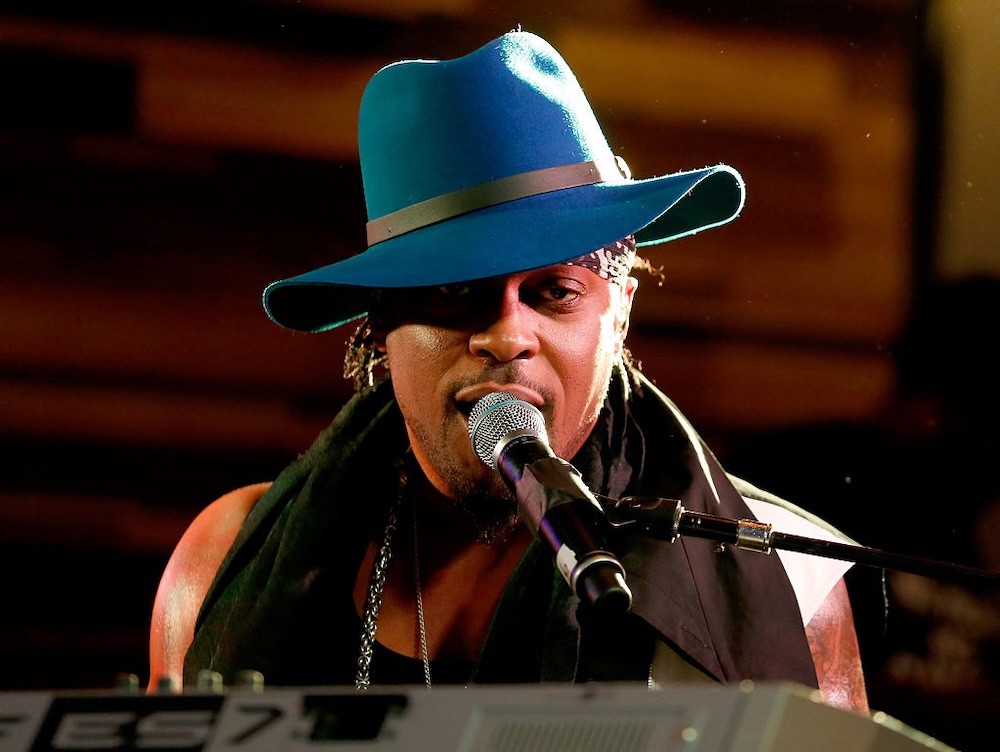The most surprising thing about Netflix monocultural phenomenon KPop Demon Hunters is how little demon hunting is in it. There’s lore, there are fight scenes, and demon ass is occasionally kicked. But for the most part, the musical is a supernatural spin on a classic record-industry story. Vocalists Rumi, Mira and Zoey make up the K-pop group HUNTR/X, the latest in a long lineage of trios tasked, Buffy The Vampire Slayer-style, to protect the world from soul-devouring demons. With the power of inspirational songs, they construct a protective barrier called the Honmoon; and as the prophecy goes, if they conquer the charts hard enough, the Honmoon will become golden, sealing away the demons forevermore. (What that would mean for HUNTR/X’s career is not dwelled upon.) In other words, the fate of humanity rests upon the numbers on the charts — and, a la stan logic, these are basically the same thing.
Unsurprisingly, the girls do defeat the demons — though not exactly how they expected to. They even managed to defeat the fourth wall: Life imitated art, and the KPop Demon Hunters soundtrack broke Netflix containment to seize the kind of monocultural dominance enjoyed mostly by the Taylor Swifts and Drakes of the world. Multiple singles are charting on the Hot 100, and the group’s big world-conquering song, “Golden,” even dethroned Alex Warren’s endless #1 hit “Ordinary.” Before The Life Of A Showgirl impacted this week, “Golden” sat atop the chart for an eighth week, and two more songs from the demon boy band Saja Boys remained in the top 10.
This success isn’t exactly unprecedented. Fictional pop stars have defictionalized themselves for decades, from the Monkees to Hannah Montana. Some of them were even animated: In 1969, Archie Comics tie-in group the Archies had a long-lived chart hit in “Sugar, Sugar.” But these are exceptions. Pop history is littered with examples of people trying to launch animated music franchises or manufacture virtual groups and failing hard: Generation O! (written by a pre-Hunger Games Suzanne Collins), the Bratz-esque concept-art sketches that became the short-lived tween-pop group Huckapoo, or the CGI-animated popstar/influencer Lil Miquela, who mostly influenced boardrooms.
The short list of cartoon-to-pop star success stories includes Gorillaz, Damon Albarn’s alt-comic side project that became a main project, and K/DA, a fictional group from the hugely popular game League Of Legends. While Gorillaz directly inspired the KPop Demon Hunters team, K/DA is closer to the actual template. The group was presented as a K-pop act but voiced by artists across the world: vocalists from K-pop group (G)I-dle plus vocalists from the Western B-list like Madison Beer. A similar strategy gave us breakthrough girl group Katseye, a product of Korean label HYBE and American label Geffen Records.
KPop Demon Hunters is similarly cross-cultural. The actual artists behind Rumi, Mira, and Zoey are EJAE, Rei Ami, and Audrey Nuna, three Korean-American vocalists with careers that have bubbled under the K-pop and American pop (hereafter referred to as A-pop) scenes. Their collaborators, too, have careers that span continents. The beats come courtesy of South Korean record label the Black Label and its K-pop megaproducer founder Teddy Park, but they are noticeably tweaked for Western musical tastes. The songwriters, too, have worked with multiple generations of K-pop and A-pop: Jenna Andrews has gone from Jessie J and Girls Generation to Jessie Murph and BTS, while Melanie Andrews’s list runs from f(x) and the Band Perry to Dove Cameron and Twice. There’s one big trend there: The Korean artists they’ve written for tend to be much bigger than their American counterparts. That’s no accident: “They innovate, and we follow,” Fontana said.
But despite the concentration of talent here, it’s no easy task to make a musical soundtrack specifically about killing supernatural monsters resonate beyond theater kids and movie megafans. How did they do it? First off, they made solid songs. The number one way that movies about pop stars fail is when their plot hinges on songs being terrible that are actually good, and vice versa. Exhibit A: “Why Did You Do That?” from the Lady Gaga remake of A Star Is Born, an ass anthem by Diane Warren that drove Bradley Cooper’s character to drink but was embraced IRL by the likes of Pitchfork, Vulture, and Rolling Stone.
With KPop Demon Hunters, it’s a little more complicated. Superficially, the plot follows the same arc: HUNTR/X abandons the throwdown rap and trap beats of “Takedown” and brash brostep swagger “How It’s Done” for the climactic power ballad “What It Sounds Like,” and it’s portrayed as their moment of authenticity, “the song we couldn’t write.” But the story clearly respects its other hits; listening to “Golden,” you can understand why so many people loved it. The song is one part “I Am” by IVE, one part Carly Rae Jepsen’s “Run Away With Me” if it were reworked for a singing competition. The verses swagger, the chorus pulses, and lead singer Ejay belts her way through a thrill ride of impassioned high notes; the songwriters tried to make the melody “unrealistic,” but she makes it sound effortless.
The real dynamic in the story isn’t good versus bad pop, but healthy versus unhealthy. One character’s musical debut is explicitly framed as a self-serving deal with a Svengali figure who also happens to be the devil. And while he and his fellow demons are drawn from Korean folk mythology, the emotional arc of the film concerns another kind of monster: one’s own demons, in the pop-psychology sense.
One major character is secretly supernatural, which manifests as a rash of Princess Mononoke-esque markings that zigzag up one’s skin in times of distress. Not only does this allow for some dramatic visual effects, but it lets the songwriting exist in the world of broadly relatable therapyspeak: in “What It Sounds Like,” she makes peace with the “patterns I’m ashamed of.” (To be fair, it’s not the only pop hit about Freudian psychology; I cannot hear the chorus without mentally tacking on “…when doves cry.” Apparently I’m not the only one.)
Elsewhere, the film shows how impossible the expectations HUNTR/X inherits are: being groomed from childhood to become not only always-on celebrities but the saviors of the world, and forbidden from showing weakness or vulnerability. As Rosé of Blackpink put it: “We were trained to always present ourselves in the most perfect, perfect way. And so even when we were interacting with fans online, it was when I was ready to give perfect answers and give them what they wanted. And making sure that I’m a perfect girl for everyone. That was the culture.”
This produces a certain tension when the story meets real life. The premise of KPop Demon Hunters is that HUNTR/X’s massive popularity will literally save the world, but there’s a subtext in its marketing and its reception that their world-conquering success might have a dark side. Pop lyrics, whether American or Korean, have long had a martial subtext: fighters, soldiers, ARMYs, love as a battlefield, and so on. KPop Demon Hunters takes it much farther. “How It’s Done” contains the lyric “fit check for my napalm era,” and “Takedown” is a diss track with the vitriol level of — and I am only slightly exaggerating — “Meet The Grahams.” HUNTR/X don’t merely call the target of their takedown a jerk; they think demons like him should die, and they vow to personally watch him perish.
In the movie, this is a major plot point: Rumi becomes increasingly uncomfortable with condemning all demons as evil. She grows to hate the song and fights to get it either rewritten or stricken from their repertoire. And she’s proven right: A demonic live performance of “Takedown” proves disastrous both for the fate of humanity and for HUNTR/X’s chart positions. IRL, though, the album has two versions of “Takedown,” one by the fictional band and one by the idols of K-pop mega-group Twice; it’s the only song with an alternate recording. The Twice version is the first track on the soundtrack, and it was the lead single. This puts KPop Demon Hunters in the awkward position of promoting itself with a song its story has disowned as hateful. Perhaps predictably, life imitated art: The public chose the broadly inspirational “Golden” over “Takedown” on the charts.
The closest thing to “bad” songs on the soundtrack are “Soda Pop” and “Your Idol,” the breakthrough hits by the Saja Boys. The former introduces the group with frivolous bubblegum pop — it’s probably no coincidence that it shares a title with one of Britney’s earliest songs. The latter is a baby’s-first-“Personal Jesus” (plus some Stray Kids and Enigma) that marks the group’s eviler and sexier reinvention.
“We wanted [the Saja Boys’] songs to feel pretty shallow,” Kang told Salon, yet the Netflix team marketed them as so-bad-they’re good; in one Instagram promo, the members of HUNTR/X all succumb to the boys’ “annoyingly catchy” melody. Later, that subtext leaked out into the real world: Korean newspaper JoongAng Daily reported that rapper-turned-producer Vince used ChatGPT to write “Soda Pop,” which left fans… unimpressed.
Hollywood has quietly been using generative AI for a while now, and — let’s be real — many songwriters probably are too. But the idea of demons procuring an army of stan Renfields by seducing them with insincere AI songwriting is so on the nose as to defy belief. Sure enough, the paper issued a correction: The English article was poorly translated (ironically, by AI), and the original Korean text had Vince saying he used ChatGPT simply “for inspiration,” which could just mean he got it to output something like “Certainly! Enhancing the harmonies would highlight the song’s catchy beat and romantic lyrics, aligning with the broader context of boy bands.” On that note, “Soda Pop” and “Your Idol” are the second and third-highest charting songs from the soundtrack. Apparently the demons do have all the best tunes.
Perhaps the real marker of industry health is how the vocalists behind HUNTR/X (and the Saja Boys) fare as people and not cartoons. Their role right now is analogous to ghostwriters or backup singers, who have always struggled to step out of their collaborators’ shadows. (Do you know who the actual Archies were? Or the members of Gorillaz not named Damon Albarn?) And while the KPop Demon Hunters characters do seem to correspond to Audrey Nuna, Rei Ami, and Ejae’s personalities — as their recent interview on Jimmy Fallon demonstrates — they’re still real people with real, interesting careers.
Audrey Nuna did a song called “Comic Sans” with Jack Harlow, and Rei Ami has a song with Pussy Riot of all people. Ejae’s career trajectory is a story in and of itself. She was a trainee at K-pop megacorporation SM Entertainment, and has an impressive voice — capable of Amy Lee wailing, near-operatic high notes, and the kind of belting that spawns hundreds of “Vocal Coach Reacts!” videos. But SM rejected her for being too old (i.e., in her early 20s), and while she wrote several hits for K-pop stars, her KPop Demon Hunters fame came around the same time she signed to Dr. Luke’s Prescription Songs. (See: uncomfortable subtext.)
Hearteningly, fans seem to have embraced both HUNTR/X and their real-life vocalists. When Ejae announced that she’d be releasing solo music later this month, their outpouring of support was tremendous. As for their fictional counterparts, a sequel to KPop Demon Hunters is in the works (obviously), and there’s talk that “Golden” might build a Honmoon around the Grammys and Oscars. The demons of the real-world music industry are all too real, but they’ve got the training to overcome them.

.jpeg)










![Jutes' new single “Parasite” embodies a night of delicious debauchery [Video]](https://earmilk.com/wp-content/uploads/2025/10/Jutes-800x379.jpg)










.jpeg)













 English (US) ·
English (US) ·